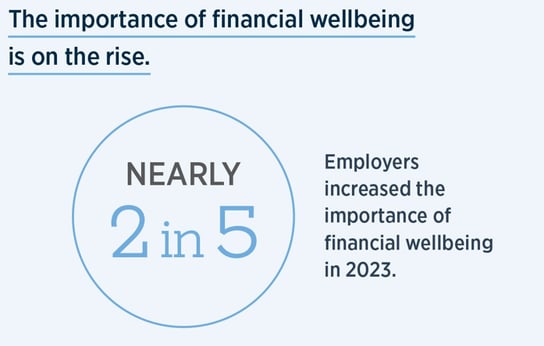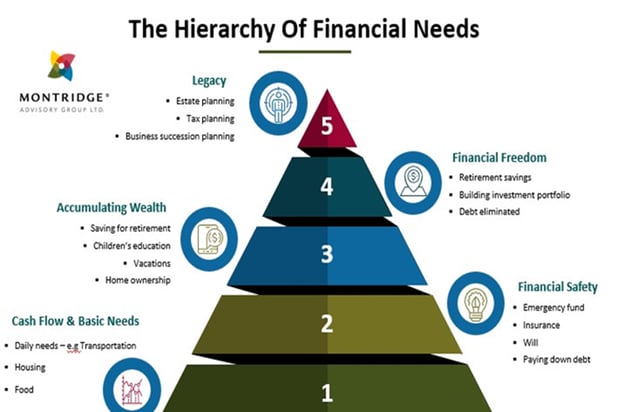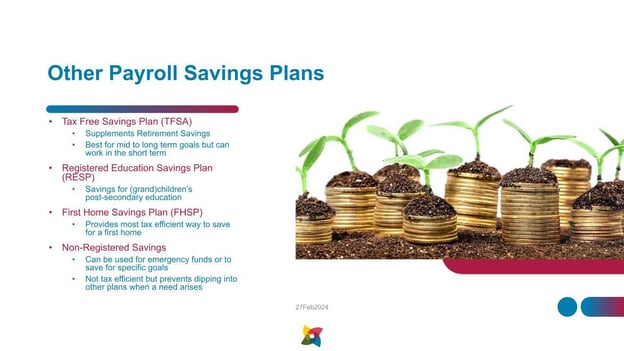Employee financial wellness is not just a trendy concept; it's a critical component of any comprehensive benefits package. In today's competitive job market, where attracting and retaining top talent is more challenging than ever, offering financial wellness programs can set your organization apart.
During our latest webinar, Judith Mewhort, our Managing Partner, discussed the importance of employee financial wellness. Judith's expertise lies in retirement planning and financial wellness, with a background in individual financial planning. She also specializes in executive benefits and business succession cases. The webinar covered the benefits of supporting employee financial wellness, inside group-sponsored retirement plans, and additional tools and supports employers can offer.
Why is it important to assist employees in their financial wellness?
Financial wellness is a subjective concept that varies from person to person. It involves having control over one's finances, the ability to make choices, and the capacity to handle unexpected financial situations. Unfortunately, many people today are not in good financial shape and feel helpless and out of control due to concerns about debt, rising inflation, and interest rates. Employers often overlook financial wellness due to discomfort and traditional taboos surrounding discussions about money. However, it is an essential topic to address to have a healthy, productive workforce.
Employers must address financial wellness due to its impact on mental health, which can lead to absenteeism, increased health costs, and decreased productivity.
Adding financial wellness support can be a competitive advantage for employers. According to recent Manulife research, workers say that if their employer offered financial wellness programs, they’d be more likely to stay at their job and recommend their employer as a great workplace.

Group-sponsored retirement plans offer a great solution but also have some downsides
The most common way to support financial wellness among Canadian employers today is formal group retirement plans. They are rising due to a growing awareness of employees' financial struggles. Group RRSPs, DPSP, and Pension plans support long-term planning and often offer the first exposure to savings & investing. They help employees to save, learn more about investing and offer tax advantages. These benefits make RRSPs a way to go for many companies, but they also have significant limitations.
Registered Retirement Savings Plans (RRSPs) are designed specifically to help people save money for their retirement. Although they can be used for mid-term goals, such as buying a home or paying for post-secondary education, they are generally not intended for short-term goals. Some people find it difficult to contribute to their RRSPs due to other financial priorities. Only 50% to 75% of employees participate in voluntary plans with an employer match.
What are employees seeking, and how can employers help?
In the past, employers focused mainly on providing higher wages to their employees. However, nowadays, employees are looking for more than just a paycheque. Many want help with various financial matters, such as becoming debt-free, understanding financial concepts, and investing. Some may only need enough money for major purchases, while others may aspire to retire early. As a result, RRSPs may not always be the best solution for everyone's needs, and employers may need to consider additional support beyond retirement plans.

Tools to boost your employees’ financial wellness
There are several alternative opportunities available for employees to save money. It is important to consider factors like demographics and philosophy when choosing the right option. However, before implementing any savings plan, it is crucial to educate employees on basic financial concepts like budgeting, emergency savings, insurance, and debt management.
Education
Employers can provide valuable support to their employees by offering educational webinars, seminars, and financial planning services. These resources are often offered by benefits or retirement plan advisors and can help employees better understand their finances. Live sessions tend to be more effective than digital tools, and employers can also share content from retirement plan providers and recommend helpful financial wellness apps and websites. Consistent reinforcement of financial education as a part of employee benefits communication is important for long-term success.
Matching group RRSP contributions
Employers' matching contribution percentages vary widely based on industry, region, and company size. In the US, it is common to have a 50% match, while in Canada, it is more typical to see a 100% match, albeit with lower percentages. The range for small to mid-sized businesses is usually between 2 to 5% with a 100% match. However, global employers with Canadian subsidiaries may offer a 6% match at 50%.
In some cases, such as private schools competing with public sector pension plans or manufacturers in unionized environments, matching percentages can go as high as 9%. These variations make it important for employers to consider their specific circumstances when determining matching contribution strategies.
Adding additional savings plans to group retirement plans
Retirement plan providers such as insurance companies or investment firms offer additional savings plans with a company-sponsored retirement plan. In this way, you can support your employees’ other financial goals very easily. Some examples of these plans include TFSA, RESP, FHSP, and Non-Registered Savings.

Offering employee assistance programs
These are typically part of your extended health benefits and usually include financial planning assistance. If financial or wills planning is not included in your firm’s EAP, it is easy to add them at a low cost. Employee assistance programs offer benefits for employees’ mental health too.
Providing digital financial coaching
There are two general types of financial apps. One type of digital financial tool is designed for individuals to help them budget, save, and invest. The other type is software designed for companies to allow employees to allocate their net pay directly from payroll to bill payments, savings, and investments. The latter type uses AI to automate employees’ payroll deductions. Both options help significantly improve financial wellness.
Conclusion
Overall, the webinar aimed to educate employers on the importance of supporting their employees' financial wellness. By providing practical strategies, education, and tools to help manage finances effectively, employers can positively impact their employees' lives. Investing in employees' financial wellness leads to increased productivity, loyalty, and satisfaction in the workplace.
To view the full recording, click the download button below.








